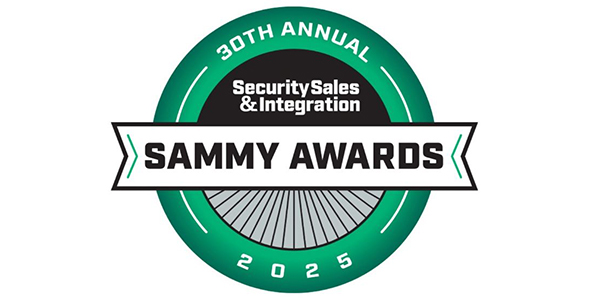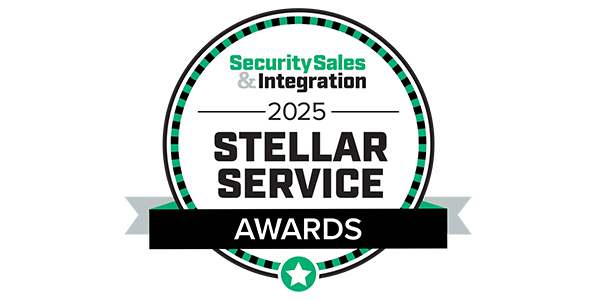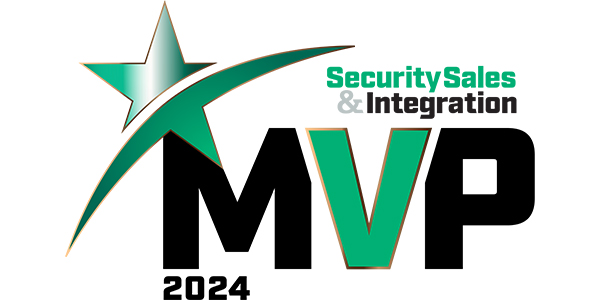Let’s start with the premise that electronic devices of all kinds within buildings and homes can help monitoring centers better gain situational awareness. Combining these devices with artificial intelligence can provide an illustration of what behavior is typical versus what is an anomaly.
The average home has a host of devices in nearly every room, including smart speakers, smart thermostats, lighting controls, smartphones/apps, access controls, door locks, video cameras, vehicle chargers, gate controls, electronic water heaters, solar systems, smart appliances (e.g., washing machines, dryers and ovens) and, of course, Wi-Fi networks.
Homes Have a ‘Rhythm’
Almost all homes have a “rhythm” to them. People come and go all the time, but it’s usually based on school and work schedules, weather, seasons and other things that have a regular impact. Schedules may change during the year, but they’re generally predictable, with every home being slightly different in how it operates.
AI is already in most homes, working to help people manage things. One example is a smart thermostat — one that “learns” when you come and go and then adjusts the HVAC to ensure comfort and efficiency.
AI acts in place of the homeowner by changing the settings based on factors like whether you are home or away, the outside temperature, weather conditions, etc., all to accomplish the homeowner’s goals.
Similarly, monitoring centers can track the “rhythm” of a home to understand expected behavior versus anomalies that require attention; then, we can use that information to impact the outcome.
Consider the following scenario: A monitoring center receives a fire alarm. Using AI, devices in the home tell us that no one is home and that everyone left an hour ago. The smart thermostat is registering an inside temperature of over 90 degrees, and the air conditioning is set to 80 degrees.
With just those facts, monitoring centers can easily deduce that there is no need to call the premises. Doing so would be a waste of time since no one is home. We can also make a pretty reasonable assumption that a fire does exist based on the room temperature reading and the smoke detector-induced fire alarm.
Using this kind of information and connectivity, we can not only get the fire department moving faster but also do things like turn off the HVAC to slow smoke spread, open up a driveway gate, turn on some outside lights, unlock doors, etc., all to ensure a smarter, more effective response.
An Age-Old Problem for Monitoring Centers
The age-old problem has been how to get all those disparate systems to talk to one another. It has been almost impossible — especially when nearly all homes and buildings have existing systems already deployed, there are dozens of wireless and wired protocols, and multiple controllers exist.
Indeed, “interoperability” has been a very questionable term in the smart building or smart home world…until now.
Enter the concept of Matter. Matter arrived in 2022. With some of the biggest tech names (e.g., Amazon, Apple, Google) onboard, the goal of Matter was to provide a seamless way to allow a device to be able to talk to up to 10 other controllers or other items on the network.
Matter, in theory, allows you purchase any device and use the voice assistant or platform you prefer to control it. This allows you to pick any mode of control, including voice, apps, hubs or even multiple ways to control things.
So, with Matter, you can have an Amazon Echo in one room, a Google Assistant in another and have several hubs talking to all the devices within the same ecosystem. You are no longer bound by a single command-and-control option.
Matter works on your local network. That means that you can expect many of your smart home devices to be more responsive to you. Most will also continue to work even when your internet goes down, as control is now capable of working locally versus in the cloud.
What makes Matter different from other protocols is the breadth of its membership (more than 600 tech organizations), as well as the fact that it is an open-source project. Interested companies can use the software development kit royalty-free (there is a cost to join the alliance) to incorporate their devices into the Matter world.
Since this is an open-source project, there isn’t a need to verify every device.
Matter Has Been Around for A While
Matter has been around for a while. The first cut of it was in 2020 under code name “Chip.” The first group of Matter-enabled devices hit the market in 2022, and Matter is now up to version 1.4, which was released last year.
The most recent edition included support for things like electric vehicle charging, energy usage, appliance control and Matter Casting. This allows you to send streams from your phone to your TV, etc. Matter is finally to a point now where most of what exists in the home can be accomplished using Matter as a protocol to control it.
Matter is not a single technology; it will morph, evolve and improve over time. And although it will never support every possible use case for every product or scenario, it’s going to be better than anything else that we’ve seen up to now.
Other standards will continue to develop for very specialized use cases, and there will be some manufacturers that choose not to support Matter. However, the more products, devices, platforms and standards that support or merge with Matter, the greater its potential to succeed.
The future of monitoring is being smart about what we do. We can no longer just continue as we have been for the last 100 years. We have made incredible progress in how we operate, but we have a way to go to turn the false alarm numbers around.
Technology like this will be one of the many things that will help drive this transformation.
Click here if you want to know more about Matter, how it works or how it could be incorporated into your portfolio.






